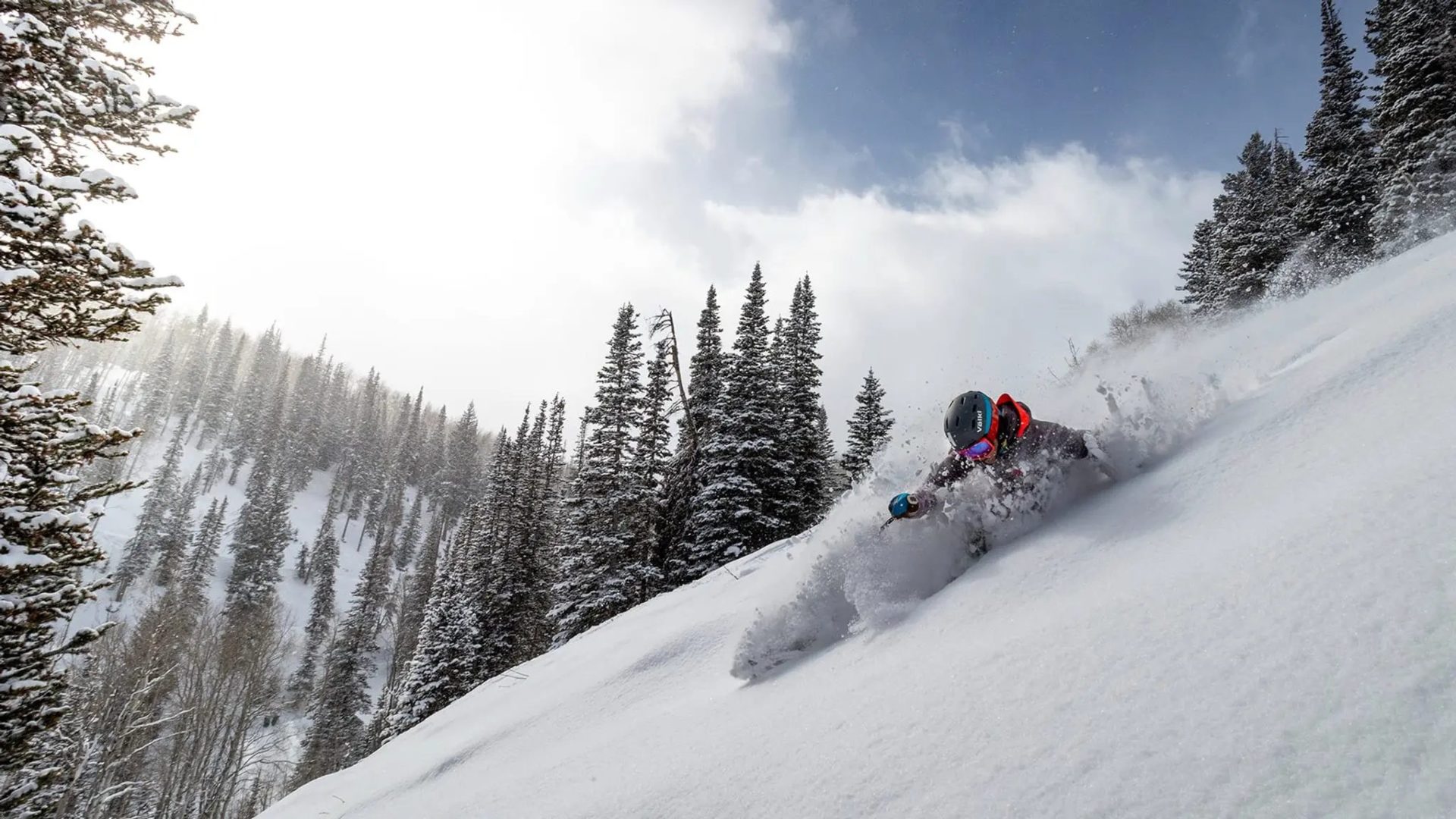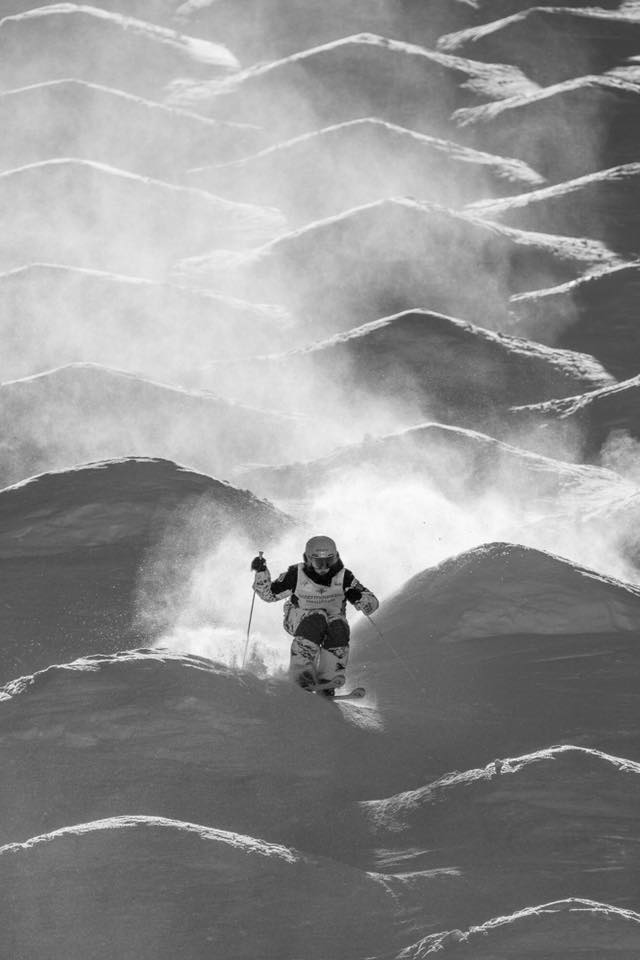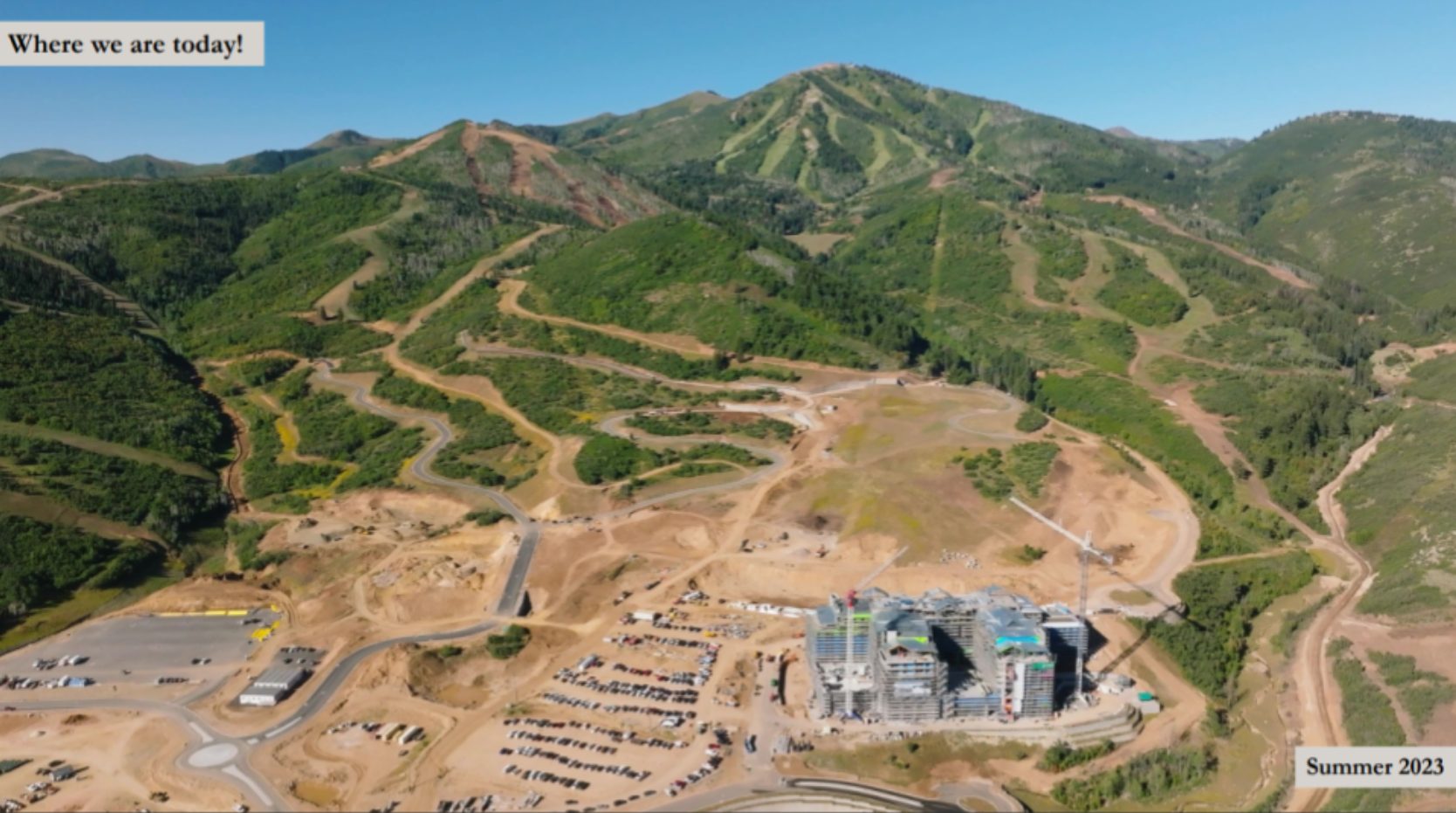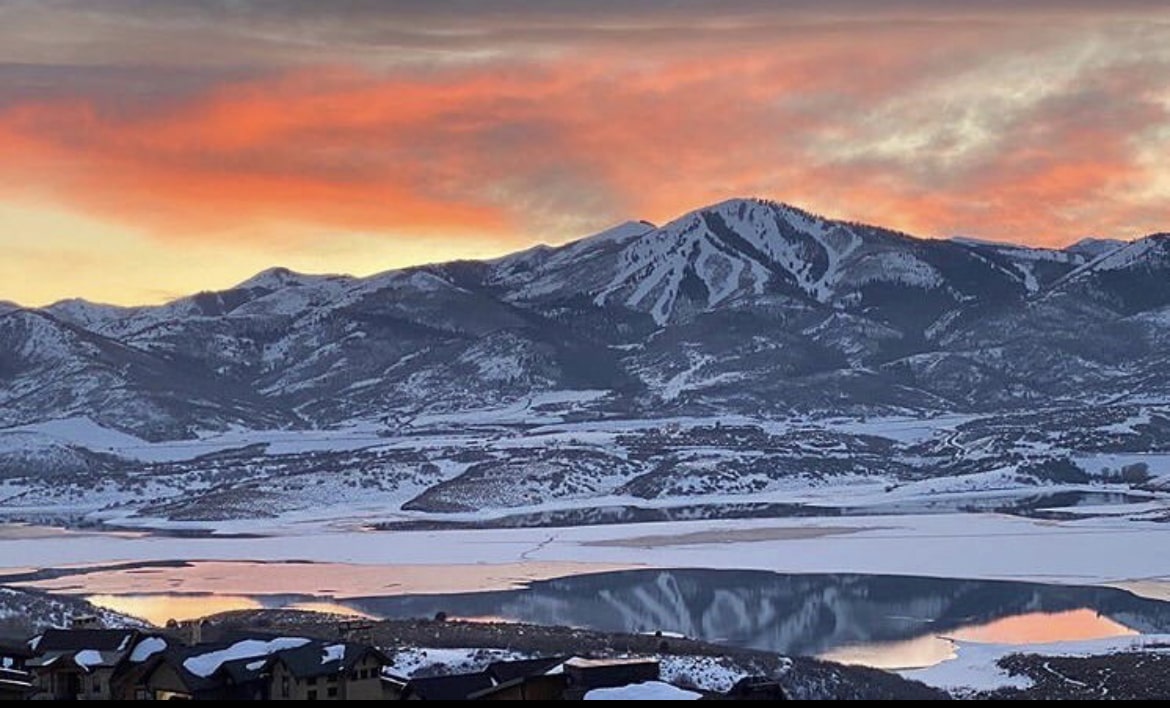
Deer Valley Ski Resort, a New York real estate developer, and a state development authority with ties to the military walk into a bar…heard this one before? Probably not. Murky details about what is being built, who is involved, and who is paying for it have led to many rumors about what is happening at Deer Valley. Because of this, I decided to investigate Deer Valley’s expansion plans and determine the extent to which the public may be paying for this massive project.
The Deer Valley expansion project, named “Expanded Excellence,” is a multi-faceted multi-year project that will include the development of two new base areas and more than double the amount of terrain available to skiers—and not snowboarders—at Deer Valley. Part of this expansion is focused on the development of the Snow Park Base Area, which will include a revamped base area and, eventually, a new gondola. The other portion of the expansion, named the Deer Valley East Village, will include expanded skier services, dining, 800 hotel rooms, and an estimated 1,700 residential units. The East Village also includes a massive terrain expansion that will add 16 chairlifts and a gondola, serving 135 new runs across four peaks. Once the expansion is complete, Deer Valley will offer 5,726 acres served by 37 lifts. The resort will still maintain its snowboarding ban.

Deer Valley, known for its upscale amenities, plans on bringing a similar approach to the new terrain and base areas. Christine Spinkston, Senior Communications Manager for Deer Valley, told SnowBrains in a written statement:
“As we expand our terrain, our aim is to enhance the overall guest experience. While the expansion will accommodate more visitors, we are also focused on maintaining the Deer Valley brand pillars, including limited capacity, ski-only access, meticulous grooming, innovative dining, and a commitment to exceptional guest service. Our targeted makeup of skier origins will continue to include a mix of hotel guests, day skiers, and local residents. Additionally, we are exploring expanded regional transit options with our partners to provide convenient transportation for our guests and staff.”
The Deer Valley East Village is the result of a partnership with Extell Development, a New York-based real estate development company that has owned the land adjacent to Deer Valley since 2017. Extell has been planning a ski area there, formerly known as the Mayflower Ski Area, for quite some time. In August 2017, Extell and Deer Valley announced a partnership whereby Extell retains ownership of the property and leases the land to Deer Valley, who in turn is responsible for the operation of the ski area. Extell is responsible for operating the base area, and both Extell and Deer Valley contribute to the funding and implementation of ski area improvements. “The partnership between Deer Valley and Extell Development is founded on a shared vision of creating a world-class base village and enhancing the Deer Valley experience,” Spinkston wrote.
The Deer Valley East Village is not Extell’s first foray into the ski industry. Brooke Hontz, Vice President for Development at Extell, told SnowBrains via email: “Extell previously owned and operated the Four Seasons Vail and appreciated the mountain luxury hotel environment/class thus the village and associated hotels were a natural fit.”

All development projects work with a regulatory authority that controls land management decisions for the location of the development. Many ski areas operate on National Forest land, and expansions are carefully scrutinized by the Forest Service or other Federal land management agencies. Otherwise, local city or county governments may control the rights to approve development projects and issue permits. The Deer Valley expansion is an interesting case because the land management authority for a portion of the East Village area is possessed by the Military Installation Development Authority (MIDA), which was created by the Utah State Legislature in 2007 to “optimize underutilized federal property and incentivize economic development that supports all branches of the military and enhances the military installations within the state,” according to Kristin Kenney Williams, MIDA’s public relations manager, who told SnowBrains this in email correspondence.
The biggest difference between MIDA and a more typical land manager like a city council or county commission is that MIDA must be invited in by the local jurisdiction. “Project areas require formal consent by the landowner, the local jurisdiction, and the MIDA Board,” Williams explained. MIDA does not have authority over the entire Expanded Excellence project. The Snow Park Base Area is being overseen by the City of Park City, and Wasatch County remains involved in other aspects of the project. “While working with county or city planning and permitting officials also involves collaboration, MIDA brings a unique perspective and specialized knowledge to the table,” Spinkston wrote.

The story of how MIDA became involved in Deer Valley’s expansion goes back to the late 1990s. Back then, the military owned a small ski lodge near Snowbasin that was closed in preparation for the 2002 Winter Olympics. MIDA became interested in the Mayflower project as a way of replacing this military recreation facility (MRF). The East Village at Deer Valley will include the Grand Hyatt Deer Valley with 100 rooms set aside for priority reservations and discount pricing for members of the military. The story of how the East Village was chosen for the site of the MRF begins at a nearby piece of former Bureau of Land Management land called the Red Maple Parcel. In 2001, Congress reallocated control of the Red Maple Parcel from the BLM to the Air Force, so that it could be developed into a replacement ski lodge. This reallocation came with the ability to trade the land for a better location if one became available. MIDA convinced Extell to donate a portion of the land in their planned Mayflower base area (now the Deer Valley East Village) to them for a military recreation facility. MIDA then traded the East Village land for the Red Maple Parcel, trading the Red Maple Parcel to Park City for $2 million. The Air Force still owns the land that the military recreation facility will be built on.

MIDA became involved with the East Village project around 2018. According to Williams, this was at the invitation of Wasatch County. “Wasatch County invited MIDA in to do what it does best: facilitate public-private partnerships and help the county execute on its 40-year-old master plan for the Jordanelle recreation area,” according to Williams. While some have criticized MIDA for a lack of public accountability, Williams wrote: “I would proffer the idea that the MRF project area is the most scrutinized, publicly-reviewed and visible project due to the amount of current development underway in the state,” further adding that the MIDA Board meetings and Design Review Committee meetings are all “publicly-noticed and well-attended, with public comment taken.” Deer Valley joined in 2023 after negotiating a partnership with Extell.
Some of the funding for the construction of the Grand Hyatt Deer Valley has come through bonds that MIDA has issued. Williams wrote that “MIDA issued $522 million in bonds to fund critical infrastructure and other development needs. These bonds will be repaid utilizing the incremental increases in property tax in the project area…the revenues not used to repay bonds are structured to be used for infrastructure or returned to our Wasatch County partners.” The basic idea of these bonds is that MIDA helps the development get started by offering cheap financing, but over time Utah will make back that money, and then some, through increases in property tax as the development raises the value of property in the area. This means that homeowners in lower Deer Valley will pay for part of Expanded Excellence, without getting the chance to vote on if and how much they want to pay for it. The bonds MIDA issues are very similar to school bonds, except that almost all states require school bonds to be approved by voters, and MIDA’s board can decide to issue bonds without direct input from the electorate.

MIDA’s board is currently chaired by Stuart Adams, President of the Utah State Senate, and is made up entirely of appointed members. If MIDA makes a decision that a large swath of the public disagrees with, there is no opportunity to elect different leadership. In December 2023, the Salt Lake Tribune reported that Extell has made over $100,000 in donations to Utah State Senate Republican Leadership, including direct contributions to the campaigns of Senator Stuart Adams, Chair of MIDA’s board, and Senator Jerry Stevenson, Vice-Chair. Though some of MIDA’s board members hold elected office, they presumably would still retain their board seats if they were not reelected to their other state and local positions. Thus, were Senator Adams or Senator Stevenson not to win reelection to the Utah Senate, they would still be MIDA board members.
Beyond the Grand Hyatt Deer Valley, MIDA recently started another venture into the ski industry at Sundance Mountain Resort near Provo, Utah. “The [Sundance] project area will facilitate the creation of a 63-room, ADA-design specific lodge where wounded veterans transitioning from hospital and rehabilitation centers will be able to visit year-round with their families and other primary caregivers to learn techniques they can apply to home life,” Williams wrote. MIDA is partnering with Storyteller Canyon Investments, which owns Sundance Mountain Resort, and Utah County.
Along with the expanded terrain and a “world-class base area,” Deer Valley estimates that the Expanded Excellence project could create as many as 2,000 jobs. Deer Valley has incorporated the construction of some new affordable employee housing into its project plan. Park City recently vacated parts of Deer Valley Drive and entered into a public-private partnership with Deer Valley. The partnership agreement includes both parties each putting up $15 million to be used for affordable housing as well as expanded regional transit. Park City’s decision to vacate the road has been challenged in court by a group of homeowners associations, which is ongoing. The lawsuit alleges that Park City did not have good cause to vacate the road and that many property owners would be materially injured if the decision to vacate the road stands. Prior to this lawsuit, Park City reportedly had asked “repeatedly” for a different design that would allow the road to remain public.
Deer Valley currently owns a little over 100 employee housing units and has plans to construct 50-100 more units. Park City’s Lower Deer Valley Neighborhood Plan states that “opportunities should be explored to provide additional workforce and/or affordable housing within the development of the Snow Park parking lots, ” according to Spinkston. She added: “Employee housing is a priority for Deer Valley. We recognize the importance of providing affordable housing options for our workforce to ensure a vibrant and sustainable community. Our goal is to develop housing solutions that meet the needs of our employees, fostering a diverse and inclusive environment.”
Deer Valley’s Expanded Excellence project will make it one of the largest ski resorts in the country. “Expanded Excellence represents Deer Valley’s ongoing commitment to innovation and the guest experience,” Spinkston wrote. With the Winter Olympics likely to return to Utah in 2034, much of Deer Valley’s expanded facilities may play an important role in hosting the games, though a recently released site plan lists Deer Valley as a potential venue, but does not include a role for the East Village. Deer Valley shared that “while the Winter Olympics may present opportunities for collaboration and infrastructure enhancements, Expanded Excellence is primarily focused on meeting the needs of our guests and community in the years to come.” The Grand Hyatt Deer Valley is set to open in late 2024, and the new terrain is slated to open in late 2025 or early 2026.
Expansion and development are natural parts of the ski industry. But when public land or public money becomes involved, careful scrutiny of the project and what public good it may bring is required before approving and funding such projects. Expanded Excellence involves Deer Valley, Extell Development, MIDA, Wasatch County, and Park City, not to mention numerous builders, designers, and other contractors. The sheer number of characters in this story makes it difficult to keep track of which groups are ending up with public money and what that money is being used for. With Deer Valley ticket prices currently approaching $300/day, there are natural questions about the need for public money in this project at all. Furthermore, when the public money and approvals for a project are granted without direct input from Utah voters, the justification for such expenditures becomes murky, and that’s not even considering Utah’s tax-paying snowboarders.
resorts that discriminate against snowboarders should be prohibited from receiving public funding.